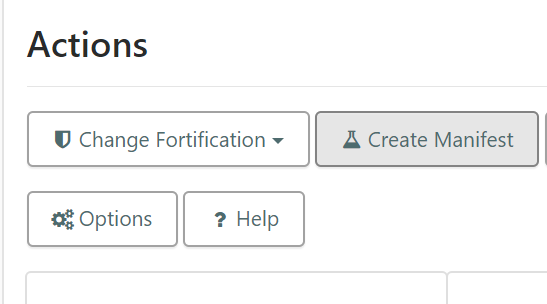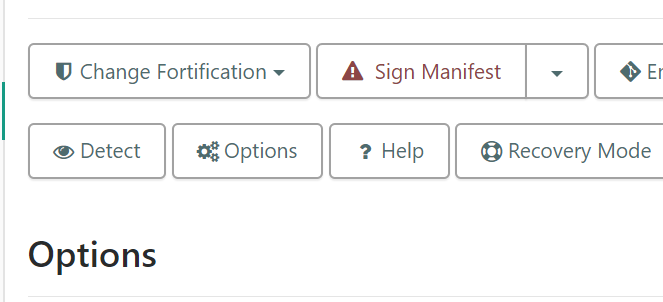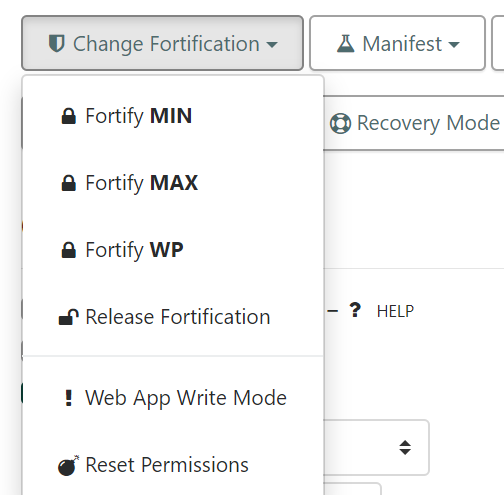v3.1.45 v3.2.0 is coming up soon, which includes a rewrite of the Web App facility. As part of this rewrite, ApisCP is improving support for custom apps that aren’t part of the panel through “manifests”. These files are created within the document root for a site. Manifests allow arbitrary Fortification profiles, database backups during snapshots, and can even extend known Web Apps in certain situations.
- First, to create a manifest, select the docroot via Web > Web Apps.
 .
. - Edit the manifest as you’d like from the new dropdown menu. Template in master provides commentary. Symfony is used to render Yaml, which at this point does not save comments during parsing.
base: wordpress fortification: wp: - .htaccess - wp-config.php - wp-content/uploads/ - wp-content/cache/ - wp-content/updraft/ - Navigate back to Web Apps. Resign the manifest.

- Your application now has an additional Fortification mode and behaves like it’s WordPress. Setting “base” instructs ApisCP to treat the application as the type specified. Detect will take care of this normally, but setting
baseallows you to stack additional behaviors onto an existing app.

Setting properties in the database field will allow any application to backup/import its database during snapshots. Of those, database.db is the only field presently used to export.
Lastly, a generic utility module will ship with .45 named “webapp” that exposes all Web App methods in wrapper form. Instead of remembering whether Laravel or WordPress is installed in foo.com, webapp:fortify("foo.com", '', 'max'); will be sufficient. ApisCP will automatically select the best interface based on what it knows.